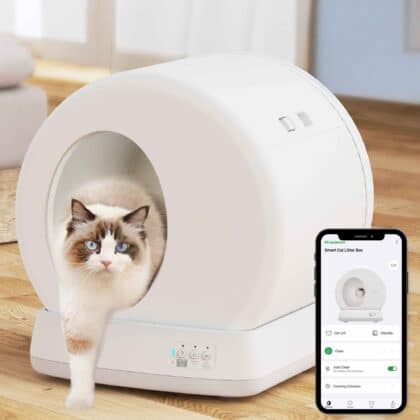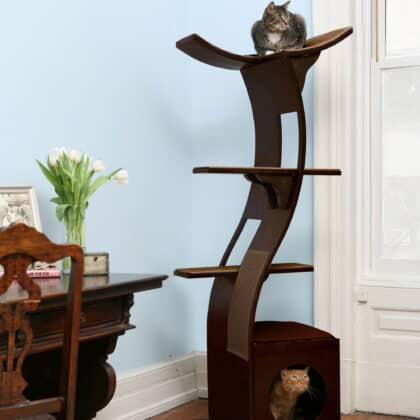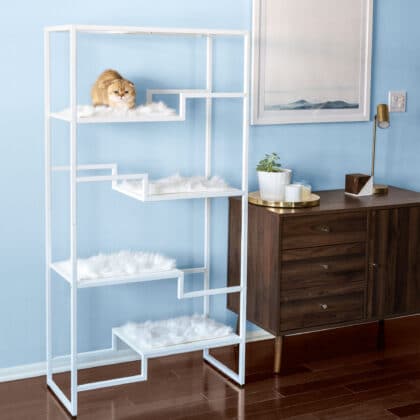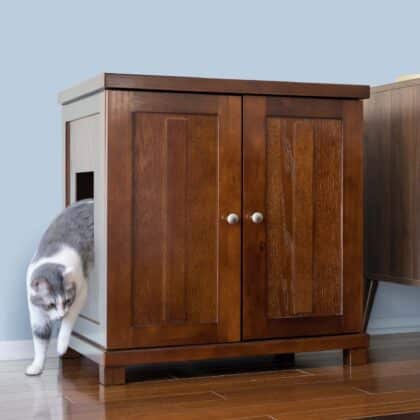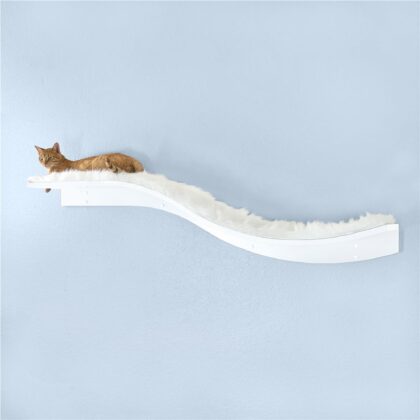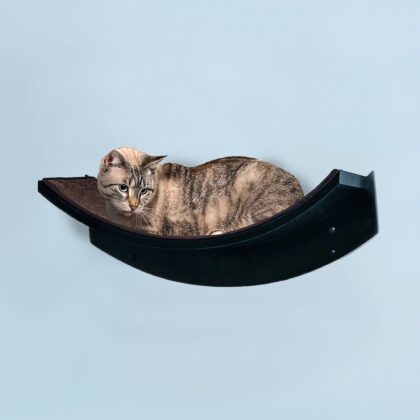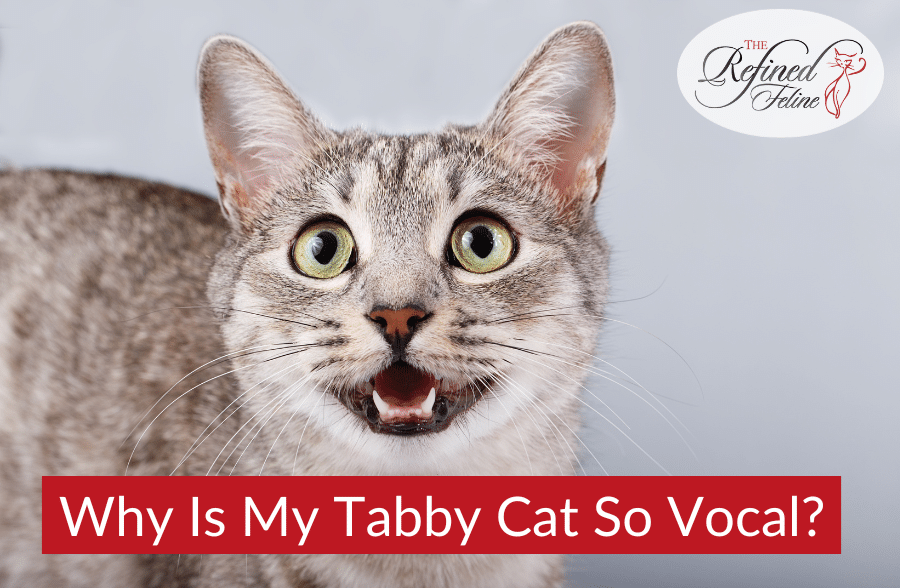
Why Is My Tabby Cat So Vocal?
Tabby cats, with their distinctive coats and expressive personalities, are among the most beloved feline companions. One trait that often stands out in tabby cats is their vocal nature. They tend to communicate more audibly than many other cats, which raises the question: why are tabby cats so vocal? In this article, The Refined Feline delves into the reasons behind their chattiness and what they might be trying to communicate.
Understanding Tabby Cats
First, it’s important to clarify that ‘tabby’ is not a breed, but rather refers to a coat pattern. This pattern can be found in many cat breeds, each with its unique personality traits. The term ‘tabby’ describes stripes, swirls, or spots, along with the typical ‘M’ marked on their foreheads. These cats can be of any breed, from the domestic shorthair to the Maine Coon.
Reasons Behind Their Vocal Nature
- Breed Characteristics
Since tabbies are not a specific breed but encompass a variety of breeds, their vocal nature can partly be attributed to their breed characteristics. Breeds such as Siamese or Maine Coons, which are known for being talkative, often display tabby patterns. The chattiness of a tabby cat might just be a reflection of its breed’s traits.
- Attention Seeking Behavior
Tabby cats are often known for their outgoing and affectionate nature. Vocalizing can be a way for them to seek attention from their human companions. When they meow, they’re often seeking interaction, whether it’s playtime, petting, or simply a conversation with their favorite human.
- Expressing Needs or Discomfort
Cats use their voice to express their needs or discomfort. A hungry tabby might meow for food, while one that’s bored or lonely might vocalize to express its desire for companionship or play. Similarly, if a tabby is feeling unwell or in pain, increased vocalization can be a sign that something is amiss.
- Environmental Factors
A cat’s environment plays a significant role in its behavior. Tabby cats living in a more stimulating environment, where vocalizing is rewarded with attention or treats, are likely to be more vocal. On the other hand, those in a quieter environment might adapt by being less chatty.
- Genetic and Individual Factors
Just as in humans, individual personality traits in cats can be influenced by genetics. Some tabby cats might be naturally more vocal due to their genetic makeup. Each cat is unique, and their levels of vocalization can vary widely.
Deciphering Tabby Cat Chatter
Understanding what your tabby cat is trying to communicate can strengthen the bond between you. Common reasons for their meows include:
- Greeting: Many tabby cats vocalize when their owner comes home as a way of greeting.
- Hunger or Thirst: Vocalizing near their food bowl or at usual feeding times.
- Desire for Attention: Meowing or purring when they want to be petted or played with.
- Response to Stress: Changes in the environment, such as a new pet or moving houses, can cause increased vocalization.
Responding to Your Tabby’s Vocalizations
Engaging with your tabby cat when they vocalize is crucial. It can involve:
- Regular Interaction: Spend time playing and interacting with your cat daily.
- Meeting Their Needs: Ensure they have constant access to food, water, and a clean litter box.
- Creating a Stimulating Environment: Toys, climbing trees, and safe outdoor access can provide necessary stimulation. Products like The Refined Feline’s Lotus Cat Tower give your tabby a perfect spot to play and rest.
When Vocalization Is a Concern
While being vocal is normal for many tabby cats, significant changes in vocalization patterns can be a cause for concern. If your cat suddenly becomes more vocal or the tone of their meow changes, it might be indicative of an underlying health issue, and a vet visit is advisable.
Fostering a Healthy Relationship with Your Vocal Tabby
Understanding and responding to your tabby cat’s vocalizations is part of building a loving and mutually respectful relationship. It’s about finding the right balance between responding to their communications and ensuring they’re healthy, happy, and well-stimulated.
- Training and Boundaries: While it’s important to respond to your cat’s vocalizations, setting boundaries is equally important. Training them to understand that constant meowing is not always rewarded is crucial.
- Regular Vet Check-Ups: Routine veterinary visits can ensure that your tabby cat’s vocal nature is just a personality trait and not a sign of a health problem.
Enhancing Communication with Your Tabby
Effective communication with your vocal tabby cat involves more than just understanding their needs; it’s about deepening the bond you share with them. Engaging in conversations with your cat, responding to their meows with your own voice, and observing their body language can make your interactions more meaningful and satisfying for both of you.
- Learn Their Language: Pay attention to the different types of meows and what they signify. Over time, you’ll start to understand the nuances in their vocalizations.
- Use a Calm and Gentle Tone: Cats are more likely to respond and engage when spoken to in a calm and gentle manner. This can also help in soothing a stressed or anxious cat.
Creating a Tabby-Friendly Home
Your home environment plays a significant role in your cat’s overall well-being. Creating a space that caters to their needs can reduce stress-induced vocalizations and encourage positive behaviors.
- Safe Spaces: Ensure your cat has access to safe, quiet places where they can retreat when they need solitude. Cozy beds or enclosed spaces, like those offered by The Refined Feline, can provide the perfect sanctuary for your cat.
- Vertical Spaces: Cats love to climb and explore heights. Products like The Refined Feline’s Lotus Leaf Cat Shelf can provide an ideal area for them to survey their territory and feel secure.
Health Concerns and Vocalization
While many tabby cats are naturally vocal, sudden changes in vocalization can be concerning. It’s essential to differentiate between normal chatter and signs of distress or illness.
- Increased Vocalization: If your cat is meowing more than usual, it could be due to pain, discomfort, or aging issues like cognitive dysfunction.
- Changes in Voice: A change in the tone or intensity of meowing might indicate a throat issue or respiratory problem.
Related: The Science Behind the Purr
The Joy of Living with a Vocal Tabby Cat
Living with a vocal tabby cat can be a delightful experience. Their expressive nature can add a layer of interaction and companionship that is unique to these chatty felines. Celebrating their vocalizations, understanding their communications, and providing them with a nurturing environment can lead to a harmonious and joyful coexistence.
- Embracing Their Personality: Each cat’s vocalizations are a part of their unique personality. Embrace and celebrate these quirks as part of what makes your cat special.
- Interactive Play: Engage in activities that stimulate both their body and mind. Puzzle toys, laser pointers, and feather wands can provide entertainment and exercise, reducing the likelihood of stress-related vocalizations.
Conclusion: Celebrating the Chatty Nature of Tabby Cats
The vocal nature of tabby cats is just one of the many charming aspects of these felines. Their meows and purrs can bring life and energy to a home. By understanding the reasons behind their vocalizations and responding appropriately, cat owners can ensure that their tabby’s chatter is a sign of a content and well-cared-for pet. So next time your tabby strikes up a conversation, take a moment to appreciate this unique aspect of their personality, and enjoy the lively banter that is sure to ensue.


